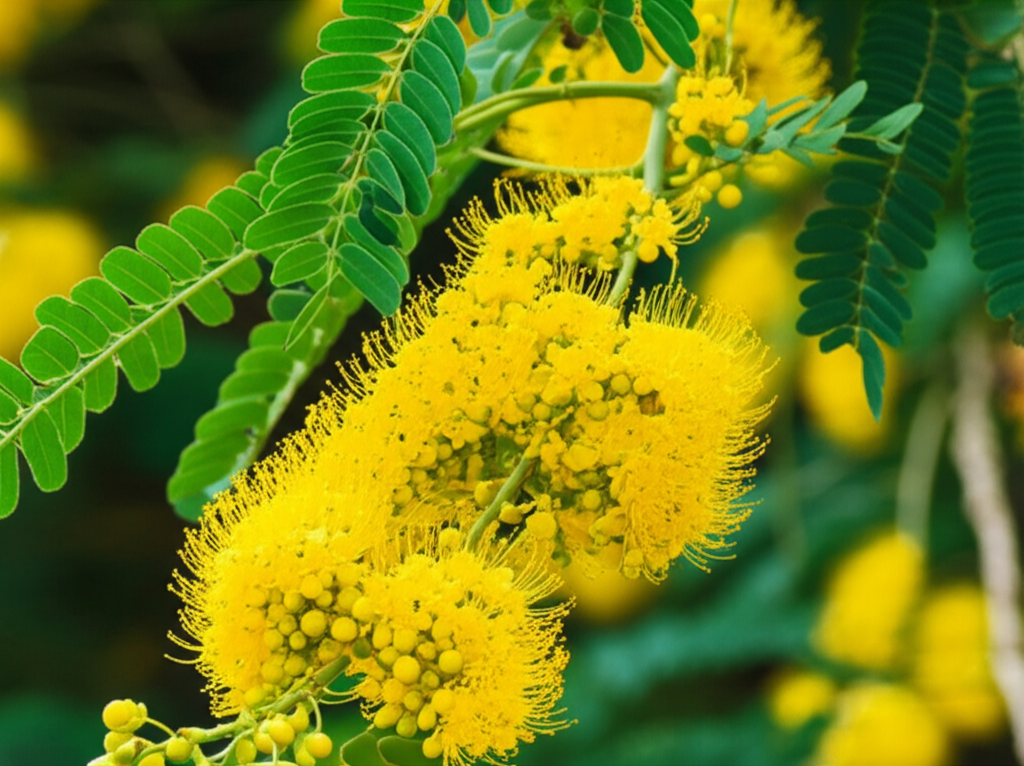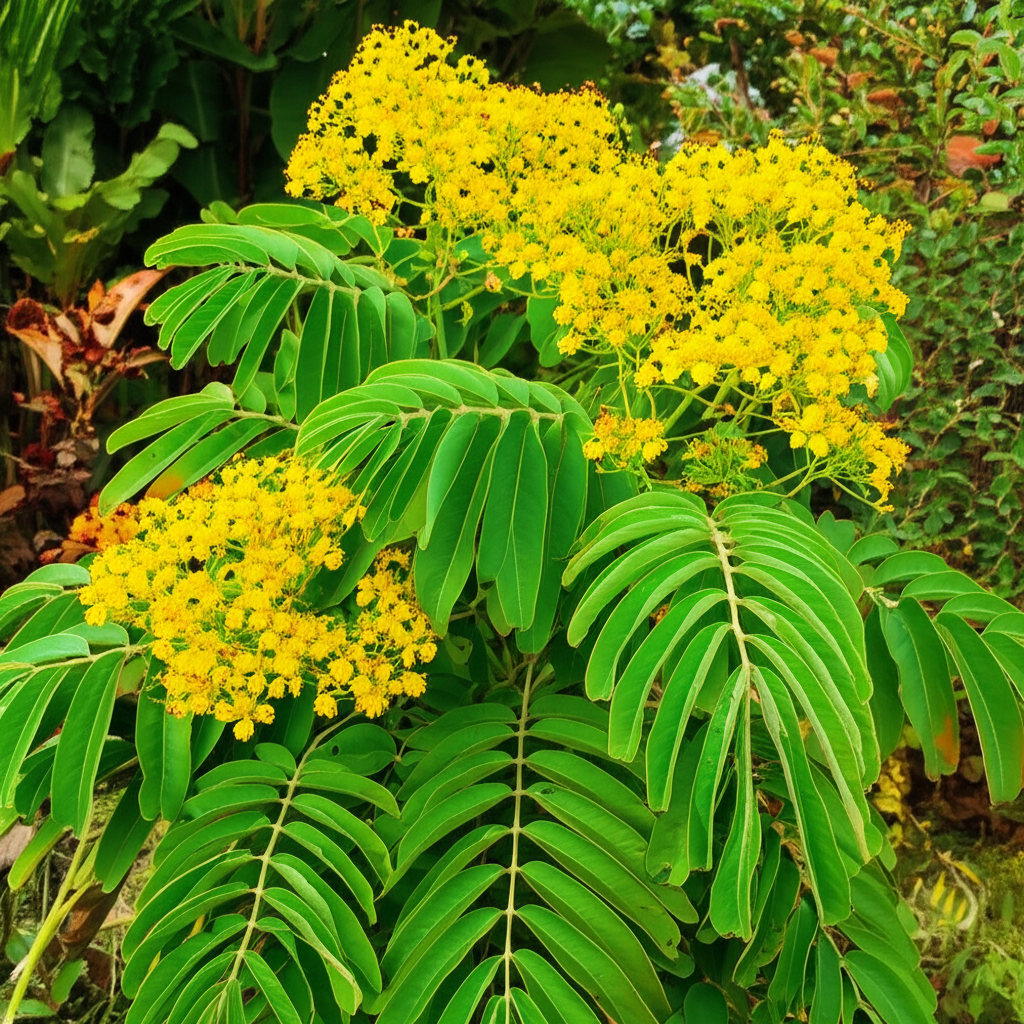Can Candle Bush Thrive in Challenging Climates? Unveiling Its Climate-Resilient Nature

Have you ever admired the striking, fire-like blooms of the Candle Bush (Senna alata) and wondered if its vibrant beauty could grace your garden, even if you don’t live in a tropical paradise? Many gardeners, particularly those in regions with fluctuating temperatures or drier spells, often seek plants that can not only survive but truly flourish despite environmental pressures. Understanding which plants possess inherent resilience is key to creating a thriving, sustainable garden that requires less intervention and offers more consistent rewards. This is precisely why exploring the climate-resilient nature of the Candle Bush is so crucial for gardeners looking to expand their plant palette and embrace low-maintenance, high-impact flora.
Quick Answer Box
Yes, the Candle Bush can indeed thrive in challenging climates, demonstrating remarkable resilience to heat, drought, and even occasional frost in milder zones. Its adaptable nature makes it a valuable addition for gardeners seeking low-maintenance plants that can withstand less-than-ideal conditions.
What is Candle Bush and Why It’s Important in Gardening
The Candle Bush, scientifically known as Senna alata (formerly Cassia alata), is a fast-growing shrub or small tree belonging to the legume family (Fabaceae). It’s instantly recognizable by its spectacular racemes of bright yellow, upright, candle-like flower clusters that appear in late summer and autumn, resembling flickering flames. Native to tropical America, it has naturalized in many tropical and subtropical regions worldwide.
Its importance in gardening stems from several factors:
Ornamental Value: Its showy blooms are a significant draw, providing a burst of vibrant color and a unique architectural form to the landscape.
Ecological Benefits: As a legume, it fixes nitrogen in the soil, improving soil fertility. Its flowers also attract pollinators like bees and butterflies.
Medicinal Properties: Historically and in traditional medicine, various parts of the Candle Bush have been used for their antifungal, laxative, and dermatological properties. While this isn’t its primary gardening purpose for most, it adds another layer to its significance.
Climate Resilience: Its ability to withstand heat, drought, and tolerate a range of soil conditions makes it a valuable candidate for gardeners in challenging environments.
Quick Recommendations or Key Insights about Candle Bush as a Climate-Resilient Plant
Sun Seeker: Prefers full sun for best flowering and robust growth.
Drought Tolerant: Once established, it requires minimal watering.
Soil Adaptability: Grows in a variety of soil types, but prefers well-drained conditions.
Frost Sensitivity: While resilient to drought and heat, it can be damaged by hard frosts. Mulching can help protect roots in borderline climates.
Pruning for Shape: Can be pruned to maintain size and shape, and to encourage bushier growth.
Pollinator Magnet: A fantastic plant for attracting bees and butterflies to your garden.
Detailed Breakdown of Candle Bush as a Climate-Resilient Plant
The term “climate-resilient” in gardening refers to a plant’s ability to withstand and recover from adverse environmental conditions such as extreme temperatures (heatwaves, cold snaps), drought, excessive rainfall, high winds, and poor soil quality. For the Candle Bush, its resilience is a testament to its evolutionary adaptations.
The Scientific Perspective: Botany and Plant Biology Behind Resilience
The Candle Bush’s resilience can be attributed to several botanical characteristics:
Deep Root System: Like many drought-tolerant plants, the Candle Bush develops a substantial taproot system that can access moisture deeper in the soil, allowing it to survive extended dry periods. This makes it less reliant on consistent surface watering.
Leaf Adaptations: While its leaves are relatively large, they are somewhat leathery, which can help reduce water loss through transpiration compared to softer, thinner leaves. Some cultivars might also have adaptations to reflect sunlight or minimize heat absorption.
Fast Growth Rate: Its rapid growth allows it to quickly establish a strong root system and reach maturity, making it more capable of surviving the establishment phase in less forgiving climates.
Nitrogen Fixation: As a member of the legume family, Senna alata possesses root nodules containing symbiotic bacteria (Rhizobia) that convert atmospheric nitrogen into a form usable by plants. This ability not only benefits the plant itself by providing essential nutrients but also enriches the soil, contributing to overall ecosystem health and reducing the need for synthetic fertilizers, which can be detrimental in sensitive climates.
Seed Production and Dispersal: The plant produces abundant seeds, often in pods, which can aid in its propagation and ability to re-establish itself if damaged by environmental factors. This reproductive strategy is a hallmark of resilient species.
Tolerance to Heat: Its tropical origins mean it is well-adapted to high temperatures. Its photosynthetic processes are efficient even under intense solar radiation.
Practical Applications in the Garden: Leveraging Resilience
Incorporating the Candle Bush into your garden, especially if you face challenging climatic conditions, offers practical benefits:
Xeriscaping and Water-Wise Gardens: Its drought tolerance makes it an excellent choice for xeriscaping or water-wise gardening designs, significantly reducing water consumption.
Low-Maintenance Landscaping: For gardeners with busy schedules or those who prefer a less hands-on approach, the Candle Bush is ideal. It requires minimal care once established.
Erosion Control: Its fast growth and robust root system can help stabilize soil, making it useful on slopes or in areas prone to erosion.
Attracting Beneficial Wildlife: Planting the Candle Bush can create a habitat and food source for local pollinators and beneficial insects, contributing to biodiversity.
Natural Fertilization: Planting it near other plants that benefit from nitrogen can improve their growth without the need for artificial inputs.
Common Mistakes to Avoid
Despite its resilience, certain practices can hinder the Candle Bush’s performance or even lead to its demise:
Overwatering: While it needs water to establish, consistently waterlogged soil can lead to root rot, especially in poorly draining conditions. This is a common mistake for gardeners accustomed to more thirsty plants.
Planting in Heavy Shade: While it can tolerate some partial shade, full sun is crucial for optimal flowering and overall health. Too much shade will result in leggy growth and fewer blooms.
Ignoring Frost: In regions with consistently cold winters and hard frosts, the Candle Bush may not survive outdoors year-round. It’s essential to understand your local hardiness zone.
Poor Drainage: While adaptable to various soil types, it absolutely cannot tolerate waterlogged conditions. Ensure your planting site has good drainage.
Over-fertilizing: Due to its nitrogen-fixing ability, it generally doesn’t require heavy fertilization, especially with nitrogen-rich compounds. This can lead to excessive leafy growth at the expense of flowers.
Expert Tips or Pro Insights
Companion Planting: Pair your Candle Bush with other drought-tolerant, sun-loving plants like succulents, ornamental grasses, or other heat-loving perennials to create a cohesive and resilient garden display.
Pruning for Rebloom: For extended bloom periods, deadhead spent flower stalks. You can also prune the plant back hard in late winter or early spring to encourage a more compact, bushy form and a fresh flush of blooms.
Mulch for Protection: In climates that experience occasional light frosts, a thick layer of mulch around the base of the plant in late fall can insulate the roots, potentially helping it survive milder freezes.
Propagation: Experts often propagate Candle Bush from seeds sown in spring or from cuttings taken in summer. This allows for easy replacement or expansion in challenging climates.
Soil Amendment: If your soil is particularly heavy or clay-like, amend it with compost and coarse sand or grit to improve drainage before planting.
Seasonal or Climate Considerations
The Candle Bush’s performance is significantly influenced by its climate:
Tropical and Subtropical Climates: This is where the Candle Bush truly excels. It blooms prolifically, grows vigorously, and can reach its full potential as a large shrub or small tree. It is generally evergreen in these regions.
Mediterranean Climates: In regions with hot, dry summers and mild, wet winters, the Candle Bush can thrive. It will appreciate supplemental watering during the hottest, driest summer months, but its drought tolerance will be a major advantage.
Temperate Climates with Mild Winters: In areas where winters are cool but generally frost-free or experience only very light, infrequent frosts (e.g., USDA Hardiness Zones 9-11), the Candle Bush can often survive as a perennial. It may die back to the ground during colder periods but will likely regrow from the roots in spring. In these zones, mulching is highly recommended.
Colder Temperate Climates: In regions with regular hard frosts and freezing winters, the Candle Bush is best grown as an annual or in containers that can be brought indoors for the winter. As an annual, it will grow, bloom, and produce seeds within a single growing season.
Buying Guide or Decision-Making Process
When choosing a Candle Bush, consider these factors:
Source: Purchase from reputable nurseries or garden centers. Look for healthy, well-rooted plants.
Size: Candle Bushes can grow quite large, so consider the mature size of the plant and ensure you have adequate space. Smaller, bushier cultivars might be available.
Climate Suitability: Crucially, assess your local climate. If you are in a zone with regular freezes, you’ll need to treat it as an annual or container plant. If you are in a warmer zone, it can be a permanent fixture.
Sunlight Availability: Select a planting spot that receives at least 6-8 hours of direct sunlight per day.
Soil Drainage: Even if you plan to amend your soil, starting with a site that doesn’t retain excessive water is beneficial.
FAQ Section for Candle Bush as a Climate-Resilient Plant
Q1: Will Candle Bush survive a mild frost?
A1: Yes, the Candle Bush can often tolerate a light, brief frost, especially if its roots are well-mulched. However, prolonged or hard freezes will likely damage or kill the plant in colder zones.
Q2: How much water does a Candle Bush need?
A2: Once established, the Candle Bush is very drought-tolerant and requires minimal watering. Water deeply during prolonged dry spells, but ensure the soil has a chance to dry out between waterings.
Q3: Can I grow Candle Bush in a pot?
A3: Absolutely! Growing Candle Bush in a pot is an excellent strategy for colder climates, allowing you to bring it indoors during winter. Ensure the pot has good drainage holes and use a well-draining potting mix.
Q4: What kind of soil does Candle Bush prefer?
A4: While adaptable, Candle Bush prefers well-drained soil. It can tolerate sandy, loamy, or even slightly clayey soils, as long as they don’t become waterlogged.
Q5: How big does Candle Bush typically get?
A5: Mature Candle Bushes can range from 5 to 15 feet (1.5 to 4.5 meters) tall and wide, depending on the cultivar and growing conditions. Regular pruning can help manage its size.
Conclusion for Candle Bush as a Climate-Resilient Plant
The Candle Bush truly earns its reputation as a climate-resilient plant, offering a remarkable combination of striking beauty and robust adaptability. Its ability to withstand heat and drought, coupled with its nitrogen-fixing capabilities, makes it a valuable and sustainable choice for gardeners navigating varied or challenging climates. By understanding its botanical strengths and providing appropriate care, particularly in terms of sunlight and drainage, you can successfully cultivate this plant and enjoy its spectacular, flame-like blooms year after year. Embrace the resilience of the Candle Bush and add a vibrant, low-maintenance splash of color to your garden landscape, proving that even in less-than-ideal conditions, nature’s beauty can flourish.


